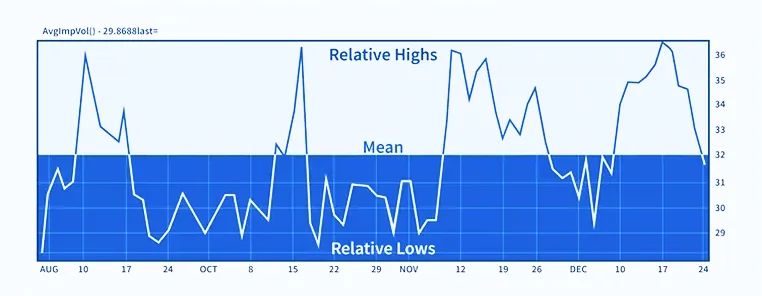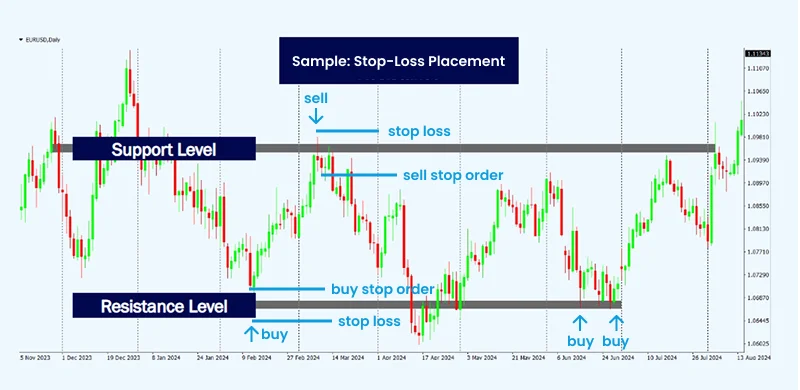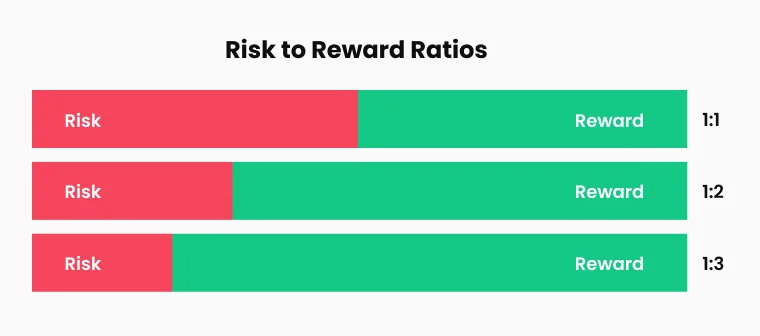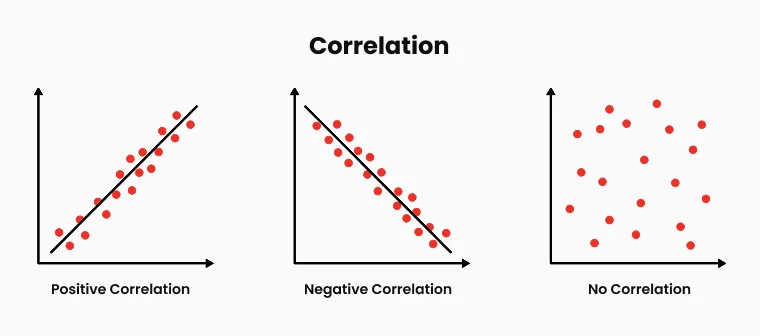

CFD Trading Strategies
CFD (Contract for Difference) trading provides flexible opportunities for traders to capitalize on both bullish and bearish market movements without holding the underlying asset. However, achieving success in CFD trading requires more than speculation — it depends on well-established strategies and disciplined risk management. Whether you are following market trends, leveraging news-driven volatility, or analyzing price action across various timeframes, adopting a systematic approach can enhance your probability of success. Curious about how to trade CFDs effectively? This guide outlines some of the most effective CFD trading strategies, along with key risk management techniques that every trader should master.
Trend Following

A digital illustration of a financial trader analyzing an upward trending candlestick chart on multiple monitors, with moving averages and trend lines overlaid, modern trading desk setup, realistic lighting
Trend following is among the most commonly employed CFD trading strategies, designed to capitalize on established market momentum. Traders utilize moving averages or trend lines to determine whether an asset is experiencing an uptrend or downtrend. In an uptrend, traders generally initiate long positions, whereas in a downtrend, they consider short positions. Stop-loss orders are placed below significant support levels for long trades and above resistance levels for short trades. To optimize profits while safeguarding gains, traders frequently implement trailing stop-loss orders that adjust dynamically as the price moves favorably.
Breakout Trading

Breakout trading aims to capture strong price movements following periods of market consolidation. Traders identify critical support and resistance levels or chart patterns such as triangles and flags to anticipate potential breakouts. Buy orders are executed when the price breaks above resistance, while sell orders are placed below support. Initial stop-loss orders are set within the consolidation range to manage risk. Profit targets are typically determined based on the pattern'’s height or previous swing highs and lows to maximize returns.
Mean Reversion Strategies

Mean reversion trading operates on the premise that prices tend to revert to their historical averages after deviating significantly in one direction. Traders employ momentum indicators such as the Relative Strength Index (RSI) or Bollinger Bands to detect overbought or oversold conditions. Counter-trend positions are initiated when indicators signal divergence, indicating a potential reversal. Given that trends can sometimes persist unexpectedly, traders apply tight stop-loss orders to limit downside risk. Profit targets are generally set near historical average price levels or at the opposite Bollinger Band boundaries.
News and Event Trading

This approach focuses on market reactions to economic data releases, central bank interest rate decisions, or corporate earnings reports. Traders identify high-impact events and evaluate potential market moves based on whether actual outcomes meet, exceed, or fall short of expectations. Due to the increased volatility associated with these events, some traders employ options strategies to hedge risk exposure. Awareness of wider spreads and reduced liquidity around major announcements is essential, as price swings can be abrupt and unpredictable.
Multi-Timeframe Analysis

This strategy improves trade decision-making by evaluating price action across multiple timeframes. Traders use a longer timeframe to identify the primary trend, an intermediate timeframe for entry signals, and a shorter timeframe for precise trade execution. Confirming alignment of signals across all timeframes enhances trade accuracy and reduces conflicting signals. Integrating multiple timeframes provides a more comprehensive market perspective before entering positions.
Risk Management Essentials for CFD Traders
Position Sizing

Effective position sizing is a cornerstone of risk management, ensuring that no single trade disproportionately affects overall capital. A common guideline is to risk no more than 1-2% of trading capital per trade. Position sizes should be calculated based on stop-loss placement to keep potential losses within acceptable limits.
In volatile markets, traders may need to reduce position sizes to accommodate increased price fluctuations. Additionally, scaling down trade sizes during drawdown periods helps preserve capital and mitigate further losses.
Stop-Loss Placement

Strategic stop-loss placement is vital for limiting unnecessary losses. Rather than setting stops at arbitrary price distances, they should be positioned at key technical levels such as support or resistance zones to minimize premature stop-outs.
Accounting for market volatility when determining stop-loss distance helps avoid exiting trades prematurely. For added protection, traders may use guaranteed stop-loss orders, especially during major economic events, to mitigate risk from sudden price gaps or extreme market moves.
Risk-Reward Ratios

Maintaining a balanced risk-reward ratio is crucial for sustained profitability. Traders typically target a minimum ratio of 1:2, meaning risking one unit of capital to potentially gain two. Higher ratios, such as 1:3 or above, enable traders to remain profitable even with lower win rates.
Setting realistic profit targets aligned with current market conditions helps avoid holding positions for unrealistic gains. Some traders employ partial position exits to lock in profits on a portion of the trade while letting the remainder run to capture extended moves.
Correlation Risk

Managing correlation risk is essential to prevent excessive exposure to similar market movements. Holding multiple positions in highly correlated instruments can unintentionally amplify risk, as price changes in one asset may directly influence others.
Understanding inter-asset relationships, such as between forex pairs, commodities, and indices, helps traders diversify their exposure. Monitoring overall portfolio delta exposure ensures directional risks remain balanced. Utilizing correlation matrices can uncover hidden market relationships, preventing unintended risk concentration.
CFD Trading Tips
Successful CFD trading requires more than selecting effective strategies; it demands discipline, market awareness, and ongoing education. Below are key tips to enhance your CFD trading performance:
1. Start with a Demo Account: Practice CFD trading using a demo account first. This enables you to familiarize yourself with trading platforms, test strategies, and understand market behavior without risking real capital.
2. Maintain Trading Discipline: Develop a clear trading plan detailing entry and exit criteria, position sizing, and risk management protocols. Adhere strictly to your plan to avoid impulsive decisions driven by emotions.
3. Use Stop-Loss and Take-Profit Orders: Always set predefined stop-loss and take-profit levels. These orders help manage risk effectively by capping potential losses and securing profits when market conditions are favorable.
4. Stay Informed and Updated: Keep abreast of market news, economic indicators, and geopolitical developments that can significantly impact volatility. Use economic calendars to anticipate potential market-moving events.
5. Focus on Risk-Reward Ratios: Aim for favorable risk-to-reward ratios (at least 1:2 or higher) to ensure potential gains substantially exceed possible losses over time. This approach supports profitability even with moderate win rates.
6. Keep a Trading Journal: Record your trades, including the rationale behind each decision, market conditions, and outcomes. Regularly reviewing your journal helps identify successful patterns and areas for improvement.
7. Regularly Review and Adjust Strategies: Markets evolve, and strategies that were effective previously may require modification. Continuously evaluate your performance and adapt your strategies to remain effective amid changing market conditions.
By incorporating these practical tips into your CFD trading routine, you can refine your market approach, enhance decision-making, and achieve greater consistency and success in your trading activities.
Conclusion
CFD trading offers a dynamic environment rich with both opportunities and risks. By mastering strategies such as trend following, breakout setups, and mean reversion — and complementing them with multi-timeframe analysis and event-driven trading —, traders can approach the markets with increased confidence. Nonetheless, even the most robust strategies can fail without rigorous risk management. Disciplined practices including appropriate position sizing, strategic stop-loss placement, and awareness of correlation risks are essential for sustained success.
Trade Smarter Today






Account
Account
Instantly



